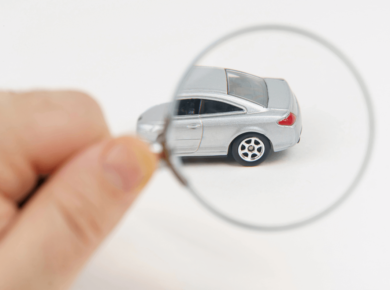
Car problems are inevitable, especially in the absence of timely maintenance. Whether you have bought a new vehicle or a used one from an auto auction online, you need to get it serviced regularly, to ensure it serves without any hiccups. However, if you know your way around tools, you don’t necessarily take your car to a service center everytime something goes south. You can go the DIY way for several minor concerns, provided you have the necessary skills and tools. The blog discusses five common car problems you may fix yourself. Read on.
1. Dead Battery
If you face a problem when starting your car, it indicates that there may be an issue with the battery. The initial step is to ensure that it is the battery that is the problem and not the starter or alternator. In case you don’t have a tester or charger, take the vehicle to a place that will check it for free. If you notice that there is a corrosion in the battery, clean it with a metal brush. Ensure that you unbolt the negative terminal first before the positive terminal. If required, take off the ground wire and replace it with a new one to enjoy a smooth ride in the vehicle.
2. Changing the Oil
Ensure that you change the oil after every 3,000-5,00 miles, depending on the age of the vehicle and its usage. Before you change the oil, you need to know four essential things:
- Type of oil and oil filter
- Location of the oil pan bolt
- Location of the oil filter
- Quantity of oil the engine stores
Once you have all the needed information, you can follow three easy steps to change the engine oil.
Step1:
Loosen the oil pan bolt and drain out the old oil.
Step 2:
Replace the oil filter.
Step 3:
Fill new oil into the engine after you tighten the bolt back-up.
NOTE: Don’t forget to put a little oil in the filter to lubricate the rubber o-ring with oil.
3. Blocked Spark Plugs
If you notice that the spark plugs are blocked with some kind of sticky substance or misfiring, the engine won’t run properly or start. In such a situation, remove the covers, unscrew the plugs and replace them with new and clean plugs. Replacing the spark plugs is quite easy provided the engine is not inaccessible.
4. Squeaky Belts
A bad belt is quite easy to spot as the wear starts to crack or fray. Ensure that you draw a belt diagram before you start removing the current belt. The reason is you need to know the path that the belt takes before you replacing the belts. Loosen the tension arm with a ratchet to free the belt. Make sure that there is no excess rubber, oil or grime that would have an impact when removing the belt, when the pulleys are exposed. Reroute the new belt using the diagram and lock the tension arm.
5. Leaky Radiator
Replace the radiator in case of a leak instead of trying to repair it with a sealant or welding. Jack up the car and empty all the coolant by removing the drain bolt at the bottom of the radiator. You also need to remove the overflow tanks, by unplugging the cooling fans and removing the top hose of the radiator. If you have an automatic transmission, you also need to remove the transmission cooling line. Slide the new radiator and swap the tubes and rubber pieces. Lastly, fill the car with a mixture of antifreeze and water or a premixed fluid.
Last Few Words
Those were some of the common problems that you can easily fix without taking the help of a mechanic. However, make sure you have the necessary tools to perform the job you are planning to undertake. You can also use the tips we have discussed for repairing a used or salvage car bought from an online auto auction site such as SalvageBid. We provide you an exhaustive listing of salvage vehicles, all available at throwaway prices. If you are looking for a reliable online auto auction site, the search ends at SalvageBid. If you have any questions, simply call +1-503-298-4300 or fill out our contact form and we will take it from there.





